Open Journal of Discrete Mathematics
Vol.3 No.3(2013), Article ID:33849,11 pages DOI:10.4236/ojdm.2013.33021
Partition and the Perfect Codes in the Additive Channel
BIT Group, Moscow, Russia
Email: garib@firmbit.ru
Copyright © 2013 Garib Movsisyan. This is an open access article distributed under the Creative Commons Attribution License, which permits unrestricted use, distribution, and reproduction in any medium, provided the original work is properly cited.
Received March 31, 2013; revised May 1, 2013; accepted May 17, 2013
Keywords: Partition; Perfect Codes; Additive Channel
ABSTRACT
Many problems of discrete optimization are connected with partition of the n-dimensional space into certain subsets, and the requirements needed for these subsets can be geometrical—for instance, their sphericity—or they can be connected with certain metrics—for instance, the requirement that subsets are Dirichlet’s regions with Hamming’s metrics [1]. Often partitions into some subsets are considered, on which a functional is optimized [2]. In the present work, the partitions of the n-dimensional space into subsets with “zero” limitation are considered. Such partitions allow us to construct the set of the group codes, V, and the set of the channels, A, between the arbitrary elements, V and A, having correcting relation between them. Descriptions of some classes of both perfect and imperfect codes in the additive channel are presented, too. A way of constructing of group codes correcting the errors in the additive channels is presented, and this method is a further generalization of Hamming’s method of code construction.
1. Introduction
Let  be a Galua field of two elements and
be a Galua field of two elements and  be a linear vector space on that field. We consider the family of the subsets,
be a linear vector space on that field. We consider the family of the subsets,  , satisfying the following conditions for all
, satisfying the following conditions for all :
:
1) 
2)
 (1)
(1)
3) 
4) 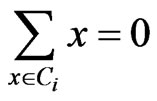 (summation is with respect to
(summation is with respect to ).
).
The first three properties are usual for partition of the subset,  , and the last “non-zero” one reflects the specificity of the further usage for constructing of the correcting codes.
, and the last “non-zero” one reflects the specificity of the further usage for constructing of the correcting codes.
The case,
 (2)
(2)
is particularly important, because it leads to constructing of the perfect codes.
Below, the term, partition of the set,  , is used in the sense of (1), i.e. it is the partition into “zero” subsets.
, is used in the sense of (1), i.e. it is the partition into “zero” subsets.
The problems of existence, constructing and partition of  for the given
for the given  and п have not only combinatorial-set interest, but also that in connection with correcting code construction. It is worthy to note that in correcting code theory the decoding regions form partitions of the space,
and п have not only combinatorial-set interest, but also that in connection with correcting code construction. It is worthy to note that in correcting code theory the decoding regions form partitions of the space,  , if decoding region pairs do not overlap each other. Consequently, some code classes—particularly, the perfect codes in the additive channel—make it possible to construct the partitions,
, if decoding region pairs do not overlap each other. Consequently, some code classes—particularly, the perfect codes in the additive channel—make it possible to construct the partitions, . Below, in the examples with
. Below, in the examples with  we leave out the subset,
we leave out the subset,  , which is the zero vector,
, which is the zero vector, .
.
Example 1.  is the partition of
is the partition of , if:
, if:
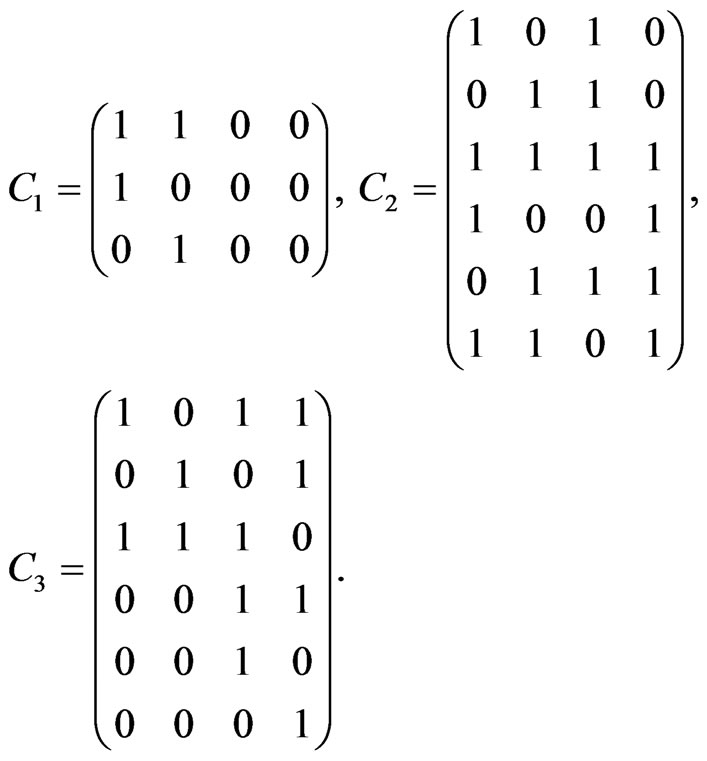
Example 2.  is the partition of the space,
is the partition of the space,  , if:
, if:

Example 3.  is the partition of the space,
is the partition of the space,  , if:
, if:
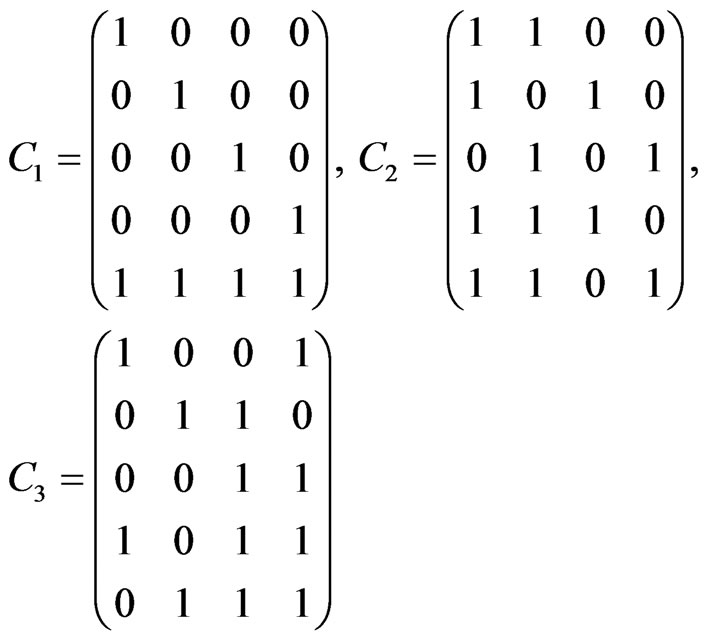
It is seen from the above examples that the space,  , can be partitioned in many ways with respect both to the number and the power of the subsets.
, can be partitioned in many ways with respect both to the number and the power of the subsets.
From the partition,  , of the set,
, of the set,  , one can obtain the partition,
, one can obtain the partition,  , taking the subset,
, taking the subset,
 , away from
, away from .
.
We present (without proof) the following lemma that describes some trivial properties of the partition, .
.
Lemma 1. For every  the following takes place:
the following takes place:
a) ;
;
b) ;
;
c)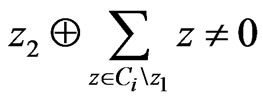 ;
;
d) .
.
If  for
for , we will take
, we will take 
Then we consider the partitions,  , taking into account that the necessary condition of their existence is the evenness of the number,
, taking into account that the necessary condition of their existence is the evenness of the number,  , if
, if  is odd.
is odd.
The following construct of the direct product allows building new partitions out of the given ones:
Lemma 2. If  and
and  are the partitions of the sets,
are the partitions of the sets,  and
and , respectively, then there are
, respectively, then there are  partitions of the subset,
partitions of the subset, .
.
Proof.
Let:

where:

Let us represent the direct product-set,  , in the form of the matrix:
, in the form of the matrix:
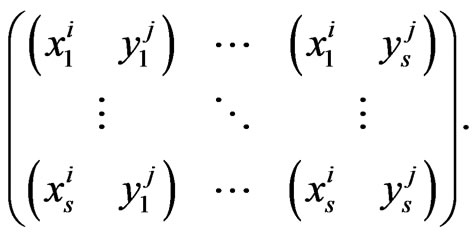 (3)
(3)
For every pair, . We define the sets,
. We define the sets,  , in the following way:
, in the following way:
a) For every  the set,
the set,  , contains only one element of any line and any column of matrix (3), and it satisfies the following condition: no pair of all the sets,
, contains only one element of any line and any column of matrix (3), and it satisfies the following condition: no pair of all the sets,  , is overlapped and every one of these sets has the power, s; that is:
, is overlapped and every one of these sets has the power, s; that is:
b) 
c) 
Let us consider the set:

From definition of  and if
and if
 and those of
and those of
 if
if  we have:
we have:
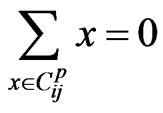 (summation is with respect to
(summation is with respect to )and as:
)and as:

Then  is a partition of the space,
is a partition of the space, .
.
Theorem 1. If  is a divisor of
is a divisor of , and
, and  is a divisor of
is a divisor of  for any positive integer,
for any positive integer,  , then
, then
 and
and 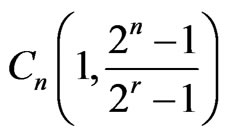 are partitions of the space,
are partitions of the space,
 .
.
Proof. It follows from the theorem’s condition that . Let us apply induction method with respect to
. Let us apply induction method with respect to .
.
For  we present
we present  in the form,
in the form,
 , where
, where . Then we have the trivial partition,
. Then we have the trivial partition,  , of
, of .
.
Let us assume that for  there is the partition,
there is the partition,  of the space,
of the space, .
.
Applying Lemma 2 with respect to the partition,
 , of Br and
, of Br and  of
of , we obtain the partition,
, we obtain the partition,  , for
, for . Consequently, there exists the partition,
. Consequently, there exists the partition,
 of
of , where
, where
 .
.
We consider  where
where
 , and
, and  is defined in the following way:
is defined in the following way:

It is easy to prove that  satisfies conditions (1) and (2) and, consequently is a partition of
satisfies conditions (1) and (2) and, consequently is a partition of .
.
Q.E.D.
Now we prove the existence of the partition,  where
where .
.
The statement holds true for . Let us assume that the statement holds true for all
. Let us assume that the statement holds true for all  as well, and prove it for
as well, and prove it for .
.
We present , where
, where

As  is an integer, and
is an integer, and , then
, then
 is an integer. Consequently,
is an integer. Consequently,  also is an integer. As
also is an integer. As , according to the assumption, there exists the following partition of the space,
, according to the assumption, there exists the following partition of the space, :
:

We consider , where
, where

As:  and
and
 , then it is enough to prove that
, then it is enough to prove that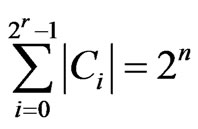 . We write:
. We write:

That is,  is a partition of
is a partition of .
.
Q.E.D.
Now we are going to describe the construction of the group code set algorithm and that of the channel sets, using the partition of the set from the ND space into “zero” subsets. It is proved that any code of the constructed set corrects all errors of every additive channel in the set of the respective channels.
An additive channel is given by the set of vectors of errors, ; any vector,
; any vector,  , at the exit of such a channel has the form:
, at the exit of such a channel has the form: , where
, where  is the initial vector,
is the initial vector,  , and
, and  is the addition operation with respect to
is the addition operation with respect to  [3].
[3].
The neighbourhood of the order of  of the vector,
of the vector,  , with respect to
, with respect to  is defined in the following form [4]:
is defined in the following form [4]:

As  does not depend on
does not depend on , we use the denotation:
, we use the denotation: 
The code, V, corrects the errors of the additive channel,  , if the following conditions are provided:
, if the following conditions are provided:
 where
where 
Classical boundaries of Hamming and VarshamovGilbert for the power of the code, V, correcting the errors of the additive channel, A, have the following form [5]:
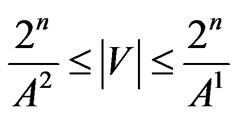 .
.
The main task for the given channel,  , is the construction of the maximum volume code correcting the errors of the channel,
, is the construction of the maximum volume code correcting the errors of the channel, .
.
The code  is called perfect for the additive channel,
is called perfect for the additive channel,  , if the following condition is satisfied:
, if the following condition is satisfied:
 (4)
(4)
The code,  , is called quasi-perfect for the channel,
, is called quasi-perfect for the channel,  , if for any оf
, if for any оf , the code,
, the code,  , is perfect for the channel,
, is perfect for the channel, .
.
In other words, the quasi-perfect code,  , for the channel,
, for the channel,  , satisfies the conditions:
, satisfies the conditions:
1) 
2)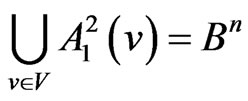 , where
, where .
.
We denote by  the group code, from
the group code, from , of the order,
, of the order,  , correcting all the errors of the additive channel,
, correcting all the errors of the additive channel, .
.
We define the product of the Boolean matrix,
 , or the dimension,
, or the dimension,  , and the vector,
, and the vector,
 , in the following way:
, in the following way:
 where
where  (summation is with respect to
(summation is with respect to ).
).
Any (0,1) matrix, H, having the dimension,  , is called checking for the code,
, is called checking for the code,  , if for all code vectors and only for them the following equality takes place:
, if for all code vectors and only for them the following equality takes place:

where all operations are carried out with respect to mod 2 ([6]).
To build the code, V, correcting the errors of the additive channel we use the following construct connected with the partitions presented above. First we build the additive channel, then the group code correcting the errors of that channel.
Let  be the negative integers and there be the set,
be the negative integers and there be the set,  , where
, where .
.
We consider the matrices,  , of the following form:
, of the following form:

Here  is the unit matrix of the order,
is the unit matrix of the order,  , and
, and  is the logic negation of
is the logic negation of .
.
We build the channel,  , where
, where
 is composed of the vectors,
is composed of the vectors,
 , where
, where , and is from all lines of the Boolean matrix given in the following way:
, and is from all lines of the Boolean matrix given in the following way:
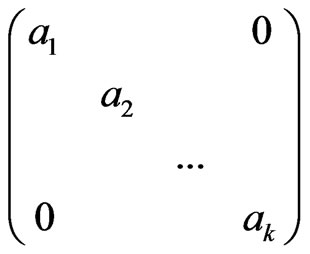 . (5)
. (5)
Example 4. We build a channel for the case:

Using the definitions of the numbers,  , and the vectors,
, and the vectors,  , we obtain:
, we obtain:

As ; then the channels,
; then the channels,  , have the following form:
, have the following form:
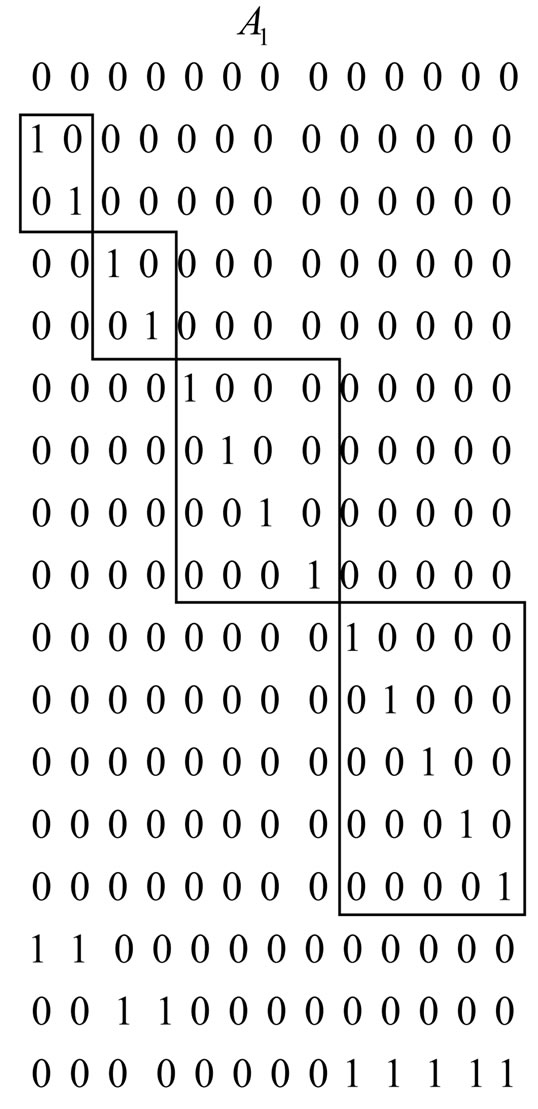
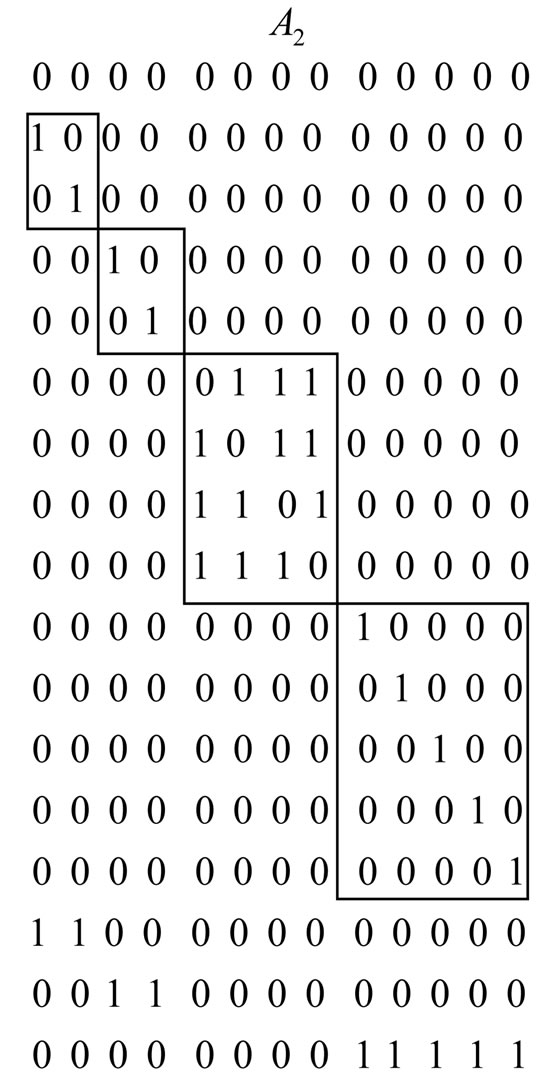
NB 1. The block,  , for constructing the channel is defined in two ways for all
, for constructing the channel is defined in two ways for all ; conesquently the set,
; conesquently the set,  , of such channels has the following power:
, of such channels has the following power:

Let

It is obvious that  and the above described channel,
and the above described channel,  , has the power:
, has the power:
 (6)
(6)
Let  be one of the partitions described above. We transform the family,
be one of the partitions described above. We transform the family,  , in the following way: we take from each
, in the following way: we take from each  a vector,
a vector,  , and throw it away, keeping all other vectors in their former form. We denote the obtained family by
, and throw it away, keeping all other vectors in their former form. We denote the obtained family by , where:
, where:

NB 2. The set,  , depends on the choice of the vector,
, depends on the choice of the vector,  , from
, from , and the checking matrix,
, and the checking matrix,
 defines the code,
defines the code,
 one to one; consequently, the set of the codes,
one to one; consequently, the set of the codes,

has the power:

We consider the group code,  from
from  having the checking matrix,
having the checking matrix,  ,
,  , and the additive channel,
, and the additive channel, .
.
We prove that the group code,  , having
, having  as its checking matrix corrects all errors of the channel,
as its checking matrix corrects all errors of the channel,  , i.e.
, i.e.  To prove this it is enough to show that for any
To prove this it is enough to show that for any ,
,  takes place:
takes place: .
.
Let , where
, where
 for all
for all . It is easy to show that:
. It is easy to show that:
 (7)
(7)
Hence, taking into account that
 has the dimension:
has the dimension: , and the column numbers of the sub-matrix,
, and the column numbers of the sub-matrix,  , coincide with those of matrix (5), where the block,
, coincide with those of matrix (5), where the block,  , is located, we obtain:
, is located, we obtain:
 (8)
(8)
We have from the definition of the channel, :
:
a) There exists an  from
from , such that for all
, such that for all  the vector,
the vector,  , is zero;
, is zero;
b) There exists a  from
from , such that for all
, such that for all  the vector,
the vector,  is zero.
is zero.
Hence, we obtain, taking (8) into account, that there exists a pair,  , for which:
, for which:
 (9)
(9)
It follows from the construction of the matrix,  , that all the columns are different; consequently, for any vector,
, that all the columns are different; consequently, for any vector,  , the equality,
, the equality,  , takes place if the
, takes place if the  -weight of the Hamming vector,
-weight of the Hamming vector,  , is more than two х. Therefore, we consider
, is more than two х. Therefore, we consider  for which
for which  .
.
The following cases are possible:
a) The vectors,  , are the lines of matrix (5). Then we obtain from (7):
, are the lines of matrix (5). Then we obtain from (7):

Hence, taking (9) into account, we obtain that there exist such vectors,  that:
that:
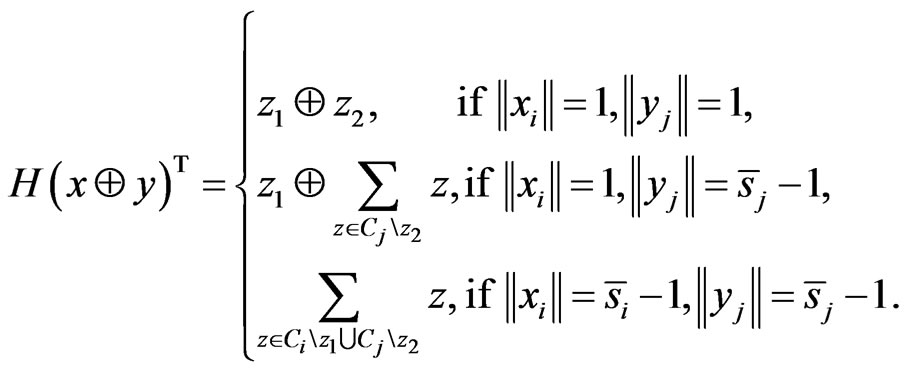
We obtain, applying Lemma 1:  i.e.
i.e. 
b) Only one of the vectors,  , is a column of matrix (5). Then we have from (7):
, is a column of matrix (5). Then we have from (7):

Hence, taking (9) into account, we obtain that there exist the vectors,  such that:
such that:
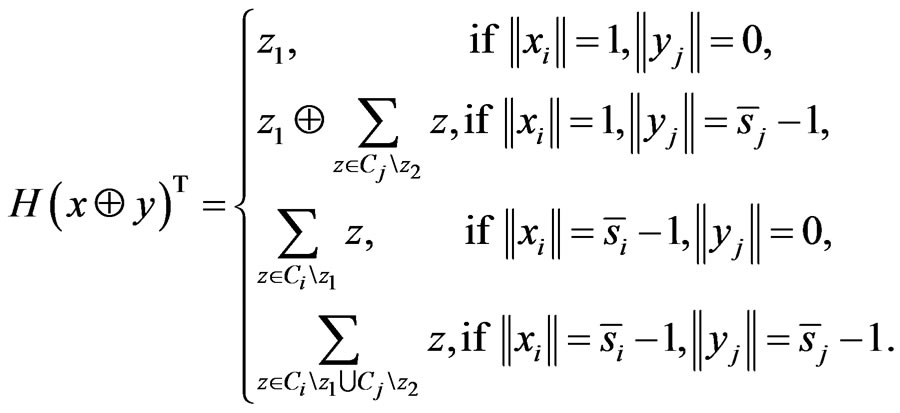
Applying Lemma 1, we get:  i.e.
i.e. 
c) Both vectors are not the lines of matrix (5). Then we have from (7):

Taking (9) into account, we get that there exist such vectors, тthat:
тthat:
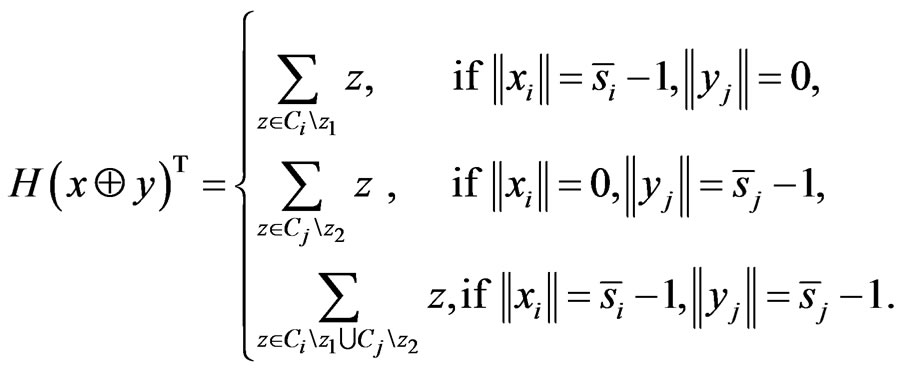
Again, applying Lemma 1, we get that for any vectors,  , takes place:
, takes place:
 , т.е.
, т.е. .
.
consequently, . As a result, we have that every code,
. As a result, we have that every code,  , corrects the errors of any channel,
, corrects the errors of any channel,  , of the set,
, of the set, . Furthermore, if
. Furthermore, if  is a partition of
is a partition of , the following takes place:
, the following takes place: . Hence we have, taking (6) into account, that the code,
. Hence we have, taking (6) into account, that the code,  , satisfies the condition (4), that is, it is perfect. In result, we get the following statement.
, satisfies the condition (4), that is, it is perfect. In result, we get the following statement.
Theorem 2. If  then every group code,
then every group code,  corrects all errors of any channel,
corrects all errors of any channel,  i.e.
i.e.
 .
.
Corollary 1. If  is a partition of
is a partition of , then every group code,
, then every group code,
 , corrects the errors of any channel,
, corrects the errors of any channel,
 and it is perfect.
and it is perfect.
NB 3. If , then the above described method of building of group codes is the Hamming method of group codes correcting the errors of the channel,
, then the above described method of building of group codes is the Hamming method of group codes correcting the errors of the channel, .
.
Let us choose  in the above described algorithm of constructing the set of channels, taking into account the following condition:
in the above described algorithm of constructing the set of channels, taking into account the following condition:

We build the set of channels,
 in the following way;
in the following way;
any channel,  is composed of the vectors,
is composed of the vectors,  where
where
 being of all lines of the Boolean matrix given in the following way:
being of all lines of the Boolean matrix given in the following way:
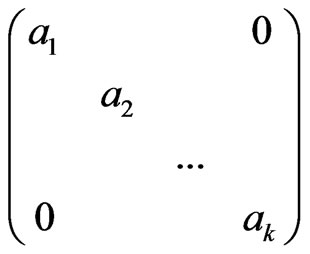
Here  is a matrix of
is a matrix of  dimension, having the form:
dimension, having the form:
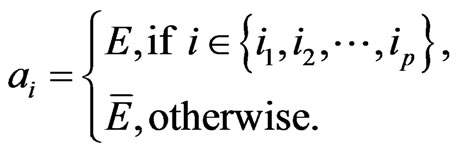
It is obvious that the above described procedure of constructing uniquely defines the set,  , of the nonzero channels for which:
, of the nonzero channels for which: 
Consequently, the following holds true.
Corollary 2. If  is a partition of the space,
is a partition of the space,  , then the perfect code, т
, then the perfect code, т corrects the errors of the zero channel,
corrects the errors of the zero channel, .
.
Corollary 3. The perfect code,  , uniquely defines the partition:
, uniquely defines the partition:

of the space,  , if
, if  is the zero channel.
is the zero channel.
Example 5. We consider the partition,  where:
where:
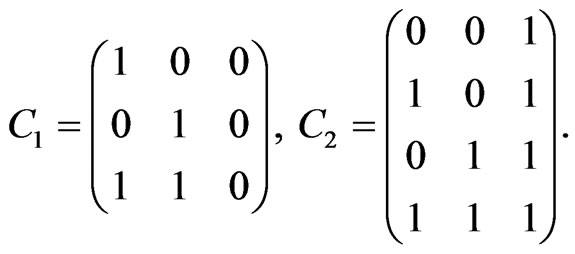
Choosing , we get the checking matrix,
, we get the checking matrix, :
:
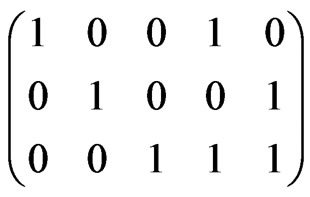 .
.
Consequently, the corresponding perfect code:

corrects the errors of the zero channel,  , of the following form:
, of the following form:
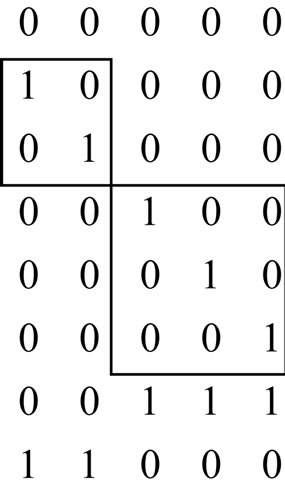
In result, we get the code, . As all
. As all  for
for  are zero sets and they partition the
are zero sets and they partition the , we get the partition,
, we get the partition,
 .
.
Now we can get the following perfect code and the partition from the above partition in a similar way.
Consequently, Corollaries 1 and 2 and 3 allow us to build the sequence of the partitions of the space and, the sequence of the perfect codes, as well.
Example 6. We have from Example 1 the partition,  of the space,
of the space, .
.

Using this partition for , we get the matrix,
, we get the matrix,  :
:
 Which is the checking matrix of the perfect code,
Which is the checking matrix of the perfect code,  , where the channel,
, where the channel,  , has the form:
, has the form:

Example 7. We use the partition,
 as in the preceding example and we build the
as in the preceding example and we build the  for
for  :
:

Then we build the matrix, :
:

which is the checking matrix of the code,  , where
, where  is one of the channels in the set,
is one of the channels in the set, . For instance:
. For instance:

Corollary 4. If  is a partition of the space,
is a partition of the space,  , and for some integer,
, and for some integer,  , takes place
, takes place
 then the group code with the checking matrix,
then the group code with the checking matrix,  is 1-quasi-perfect.
is 1-quasi-perfect.
Example 8. We consider the partition,  , of the space,
, of the space,  of example 1.
of example 1.
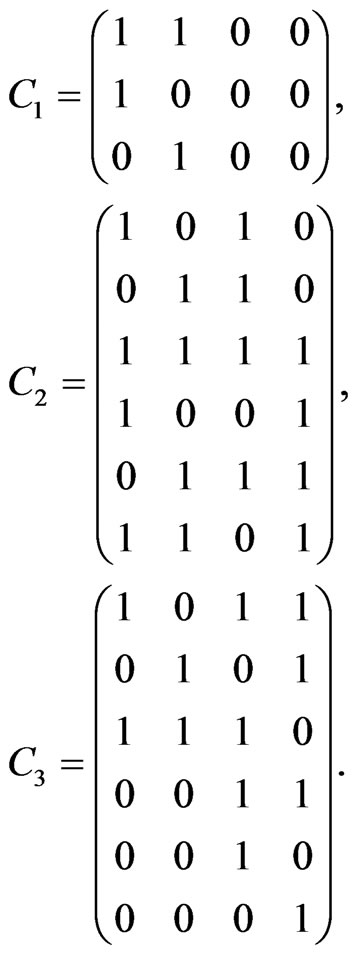
For  and
and  we build
we build :
:

Then we build the matrix, 

Which is the checking matrix of the code,  , where
, where  is one of the channels in the set,
is one of the channels in the set, . For instance:
. For instance:
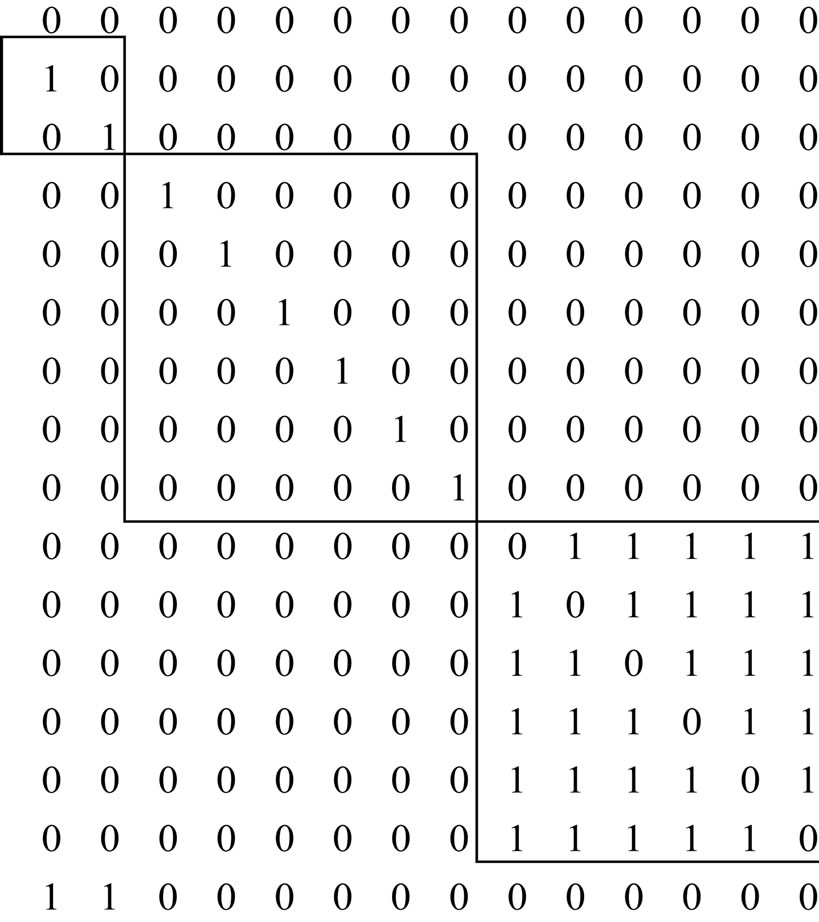
Now we are going to consider the case,  The interest in this case is due to the following circumstances. According to Theorem 1, existence of a partition in
The interest in this case is due to the following circumstances. According to Theorem 1, existence of a partition in  depends only on the parameters, n and s, and this simplifies the algorithm of both code and communication channel described in §2. Besides, in the case,
depends only on the parameters, n and s, and this simplifies the algorithm of both code and communication channel described in §2. Besides, in the case,  , classification of building both codes and channels is simplified as well.
, classification of building both codes and channels is simplified as well.
It follows from theorem 1 and theorem 2 (§1, §2) the following.
Theorem 3. If  a divisor of
a divisor of , and
, and  is a divisor of
is a divisor of , for any positive integer,
, for any positive integer,  , and if
, and if , then there exist the perfect codes,
, then there exist the perfect codes,
 , for
, for 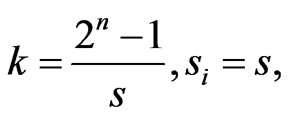 and for
and for
 where
where 
The proof is similar to the one for Theorem 2.
In the following two examples, we build two different channels and the codes corresponding to both, using the parameter, .
.
Example 9. Using the partition,  of the space,
of the space,  we have from example two:
we have from example two:

For , we get the checking matrix,
, we get the checking matrix,
 .
.

which is the checking matrix for the perfect code,  , where the channel,
, where the channel,  , has the following form:
, has the following form:
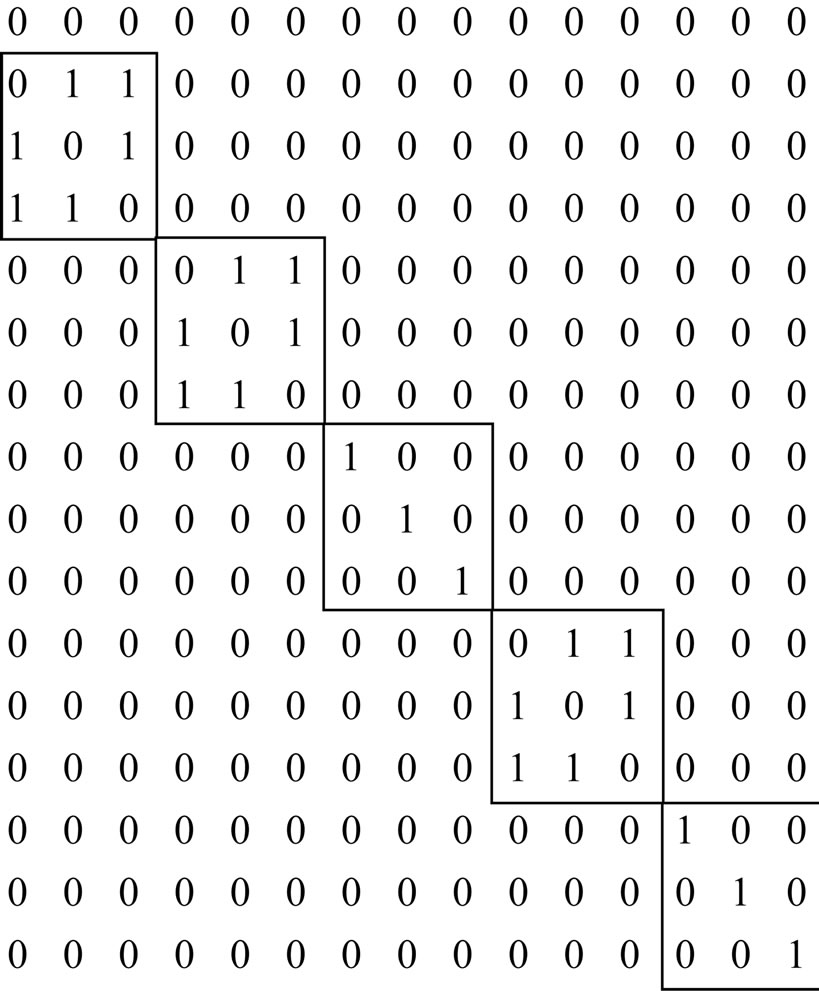
Example 10. Using the partition,
 , of the space, B4, we build from example the
, of the space, B4, we build from example the  for the set,
for the set,
 , and for the vectors,
, and for the vectors,


Then we build the matrix,
 :
:
 which is the checking matrix for the perfect code,
which is the checking matrix for the perfect code, .
.
We consider the channel, :
:

At the end of the present paper we consider the group perfect codes built through the partition,  , for
, for
 and correcting the errors of the channel,
and correcting the errors of the channel,
 , in the space,
, in the space, .
.
Example 11. We consider the partition,
 for
for  and
and
 . We take the case,
. We take the case, .
.
 .
.
 is the checking matrix of the group perfect code,
is the checking matrix of the group perfect code,  , where
, where  has the following form:
has the following form:

Let us have a closer look at the group perfect code,
 , where
, where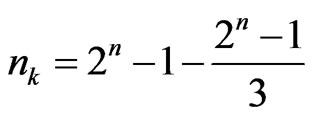 , of course, for the case that the
, of course, for the case that the  is a partition of the space,
is a partition of the space, . Then for
. Then for , the channel,
, the channel,
 has the following form:
has the following form:
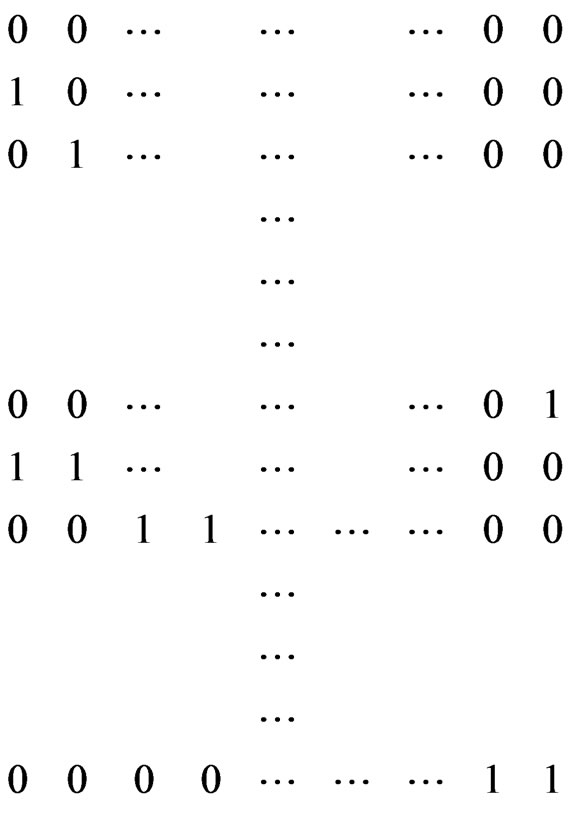

Taking this and Corollary 4 into account, we get:
The perfect code,  is a quasi-perfect code in the additive channel:
is a quasi-perfect code in the additive channel:
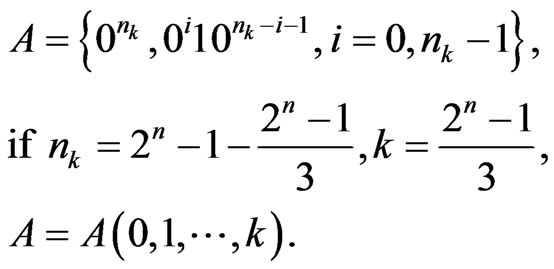
2. Addenda Zero Matrices
In this addenda, we consider the connection between the zero sets and the deadlock tests [7]. For the further discussion, it is more convenient to consider the set of vectors as a matrix having those vectors as its lines of the given set.
Let  be the space of the
be the space of the  matrices on Galua field.
matrices on Galua field.
Definition. The matrix,  , is called null-matrix if the sum of its lines is a zero vector. Moreover, the matrix,
, is called null-matrix if the sum of its lines is a zero vector. Moreover, the matrix,  , is called regular if all its columns are different. It is obvious that the regular matrix corresponds to the subset of power,
, is called regular if all its columns are different. It is obvious that the regular matrix corresponds to the subset of power,  , in
, in .
.
Problem 1. Describe the set,  , of regular matrices.
, of regular matrices.
Problem 2. Find the number of the null-matrices.
Problem 3. Describe the partition of , through the zero subsets.
, through the zero subsets.
Examples.
1) If , then the
, then the  is the regular nullmatrix.
is the regular nullmatrix.
2) If , then there doesn’t exist a regular nullmatrix.
, then there doesn’t exist a regular nullmatrix.
3) If , then the following matrices are regular null-matrices:
, then the following matrices are regular null-matrices:
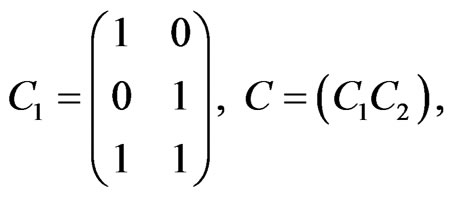 where
where  is any regular null-matrix of
is any regular null-matrix of .
.
4) If , then:
, then:
 or
or where
where  is any regular null-matrix
is any regular null-matrix .
.
5) Let , then the regular null-matrices are as follows:
, then the regular null-matrices are as follows:
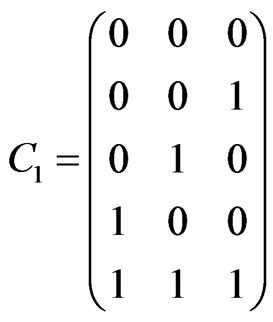 and
and where
where  is an arbitrary null-matrix in
is an arbitrary null-matrix in .
.
Now we consider the following set of matrices, :
:
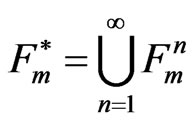 .
.
We introduce in  partial order, requiring:
partial order, requiring:
 If the matrix
If the matrix  can be obtained from
can be obtained from , taking away some set of columns.
, taking away some set of columns.
Definition. The matrix,  in the class,
in the class,  , is called extreme (or deadlock) if for
, is called extreme (or deadlock) if for  it follows that
it follows that .
.
Examples.
6) We describe all extreme matrices in :
:

Definition. The two matrices,  and
and  in
in  are called equivalent if
are called equivalent if  can be obtained from
can be obtained from  by permutation of lines and columns (this equivalency is denoted by:
by permutation of lines and columns (this equivalency is denoted by: ).
).
Examples.
7) The matrices,  and
and  in example 6 are equivalent, because
in example 6 are equivalent, because  is obtained from
is obtained from  by the permutation of the 2nd and 3rd columns.
by the permutation of the 2nd and 3rd columns.
In connection of the above definition, we use the following coding of the matrices of . We numerate all the columns of the length
. We numerate all the columns of the length , choosing, for instance, the lexicographical order.
, choosing, for instance, the lexicographical order.
Let the corresponding numeration be, . Then we put a vector of the length,
. Then we put a vector of the length,  into correspondence with
into correspondence with . We get
. We get , where
, where  is the number of the columns equal to
is the number of the columns equal to  in the matrix,
in the matrix, . We call the vector,
. We call the vector,  , column vector of the matrix,
, column vector of the matrix, . Then the following is obvious:
. Then the following is obvious:
Statement. If the matrices,  and
and  are equivalent, then
are equivalent, then .
.
Now we describe all extreme matrices for a fixed m. We denote the set of all such matrices by . The elements of the class,
. The elements of the class,  , have the following properties:
, have the following properties:
1) If  , then
, then .
.
This property follows the fact that all the lines of the matrix,  are different.
are different.
2) If , then for
, then for  we have:
we have: 
Indeed, if ? then there are identical columns in the matrix,
? then there are identical columns in the matrix, . But then we can take one of them away, and the lines in the obtained matrix will again be different, and this means that
. But then we can take one of them away, and the lines in the obtained matrix will again be different, and this means that  .
.
3) If , there is neither regular, nor unit columns in the matrix,
, there is neither regular, nor unit columns in the matrix, .
.
This statement is proved similar to the preceding one.
4) Each of the columns of the matrix,  , has even number of units..
, has even number of units..
This follows the fact that the matrix is a null-matrix.
The significance of the introduced definitions and the above results is that they make possible to obtain any matrix just adding some null-matrix to . This is due to the fact that taking away columns out of any matrix,
. This is due to the fact that taking away columns out of any matrix,  leads to a matrix,
leads to a matrix, .
.
Conclusion. Obtaining the matrices,  out of the matrix,
out of the matrix,  , is a problem of building deadlock tests for the given matrix,
, is a problem of building deadlock tests for the given matrix,  [7].
[7].
REFERENCES
- V. K. Leontyev, G. L. Movsisyan and J. G. Margaryan, “Partition of N-Dimensional Space on GF(2) into Dirichlet’s Regions,” Vestnik RAU, Vol. 2, No. 1, 2011, pp. 26-41.
- G. L. Movsisyan and J. G. Margaryan, “Optimal Sets in the N-Dimensional Cube,” Uchenie Zapiski, Vol. 170, No. 1, 1989, pp. 18-26.
- V. K. Leontyev, G. L. Movsisyan and J. G. Margaryan, “Perfect Codes in Additive Channels,” Reports of RAS, Vol. 411, No. 3, 2006, pp. 306-309.
- V. K. Leontyev, G. L. Movsisyan and J. G. Margaryan, “Correction of Errors in the Additive Channel,” Vestnik RAU, Vol. 2, No. 1, 2010, pp. 12-25.
- V. K. Leontyev, G. L. Movsisyan and J. G. Margaryan, “On Perfect Codes in Additive Channels,” Problems of Information Communication, Vol. 44, No. 4, 2008, pp. 12-19.
- F. J. M. Williams and N. J. A. Sloane, “The Theory of Error-Correcting Codes,” Bell Laboratories, Marray Hill, 1977.
- N. A. Solovyov, “Tests (Theory, Construction, Use),” Science, Novosibirsk, 1978, p. 189.

